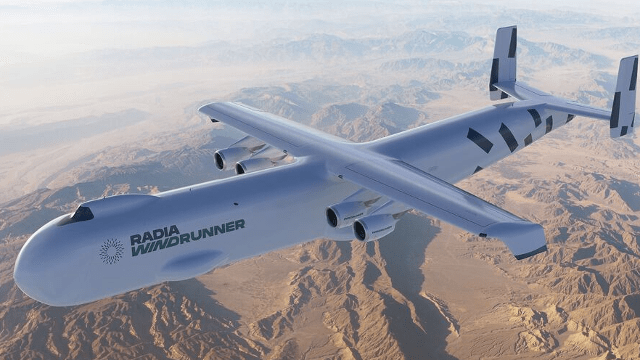Larger than the Antonov-225, a giant cargo plane designed to carry wind turbine blades
In a world where innovation and sustainability go hand in hand, an American start-up, Radia, is embarking on an audacious project: to build the world's largest cargo plane, surpassing even the Antonov-225. This giant of the air, named Windrunner, promises to revolutionize the transportation of wind turbine blades, bypassing the logistical challenges posed by their increasing size. With a length of 108 meters, Windrunner will be able to transport wind turbine components as long as a soccer stadium, weighing up to 80 tonnes.
Although ambitious, this project responds to a necessity: to accompany the expansion of wind farms, which are opting for ever-larger structures to optimize the production of renewable energy. Larger blades capture more wind, and higher masts access more constant currents, significantly increasing wind turbine efficiency.
Nevertheless, this innovation is not without its challenges. For example, to accommodate such machines would require the construction of dedicated airstrips within the wind farms themselves, an idea that might seem surprising or even utopian, particularly in the densely populated regions of Europe. What's more, although Windrunner marks a significant advance in the transportation of wind farm components, it is still a long way from being able to transport the larger blades envisaged by the industry, such as Mingyang Smart Energy's 140-meter blades.
Despite these challenges, the Windrunner project is taken very seriously, enjoying the support of experts from the aviation industry, the Federal Aviation Administration (FAA) and the renewable energy sector. As the world seeks to accelerate the transition to cleaner sources of energy, initiatives like Radia's could play a crucial role in achieving this global goal, despite the obstacles to be overcome.

Comments0
Please log in to see or add a comment
Suggested Articles

